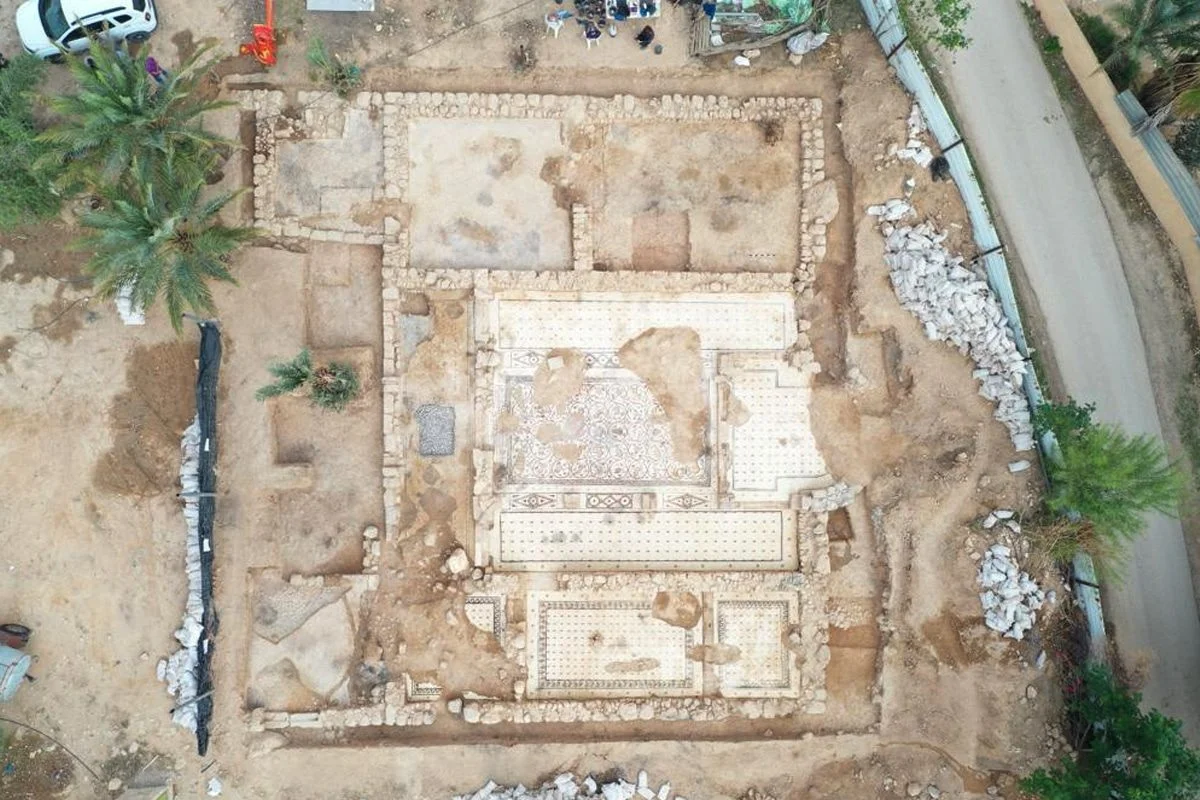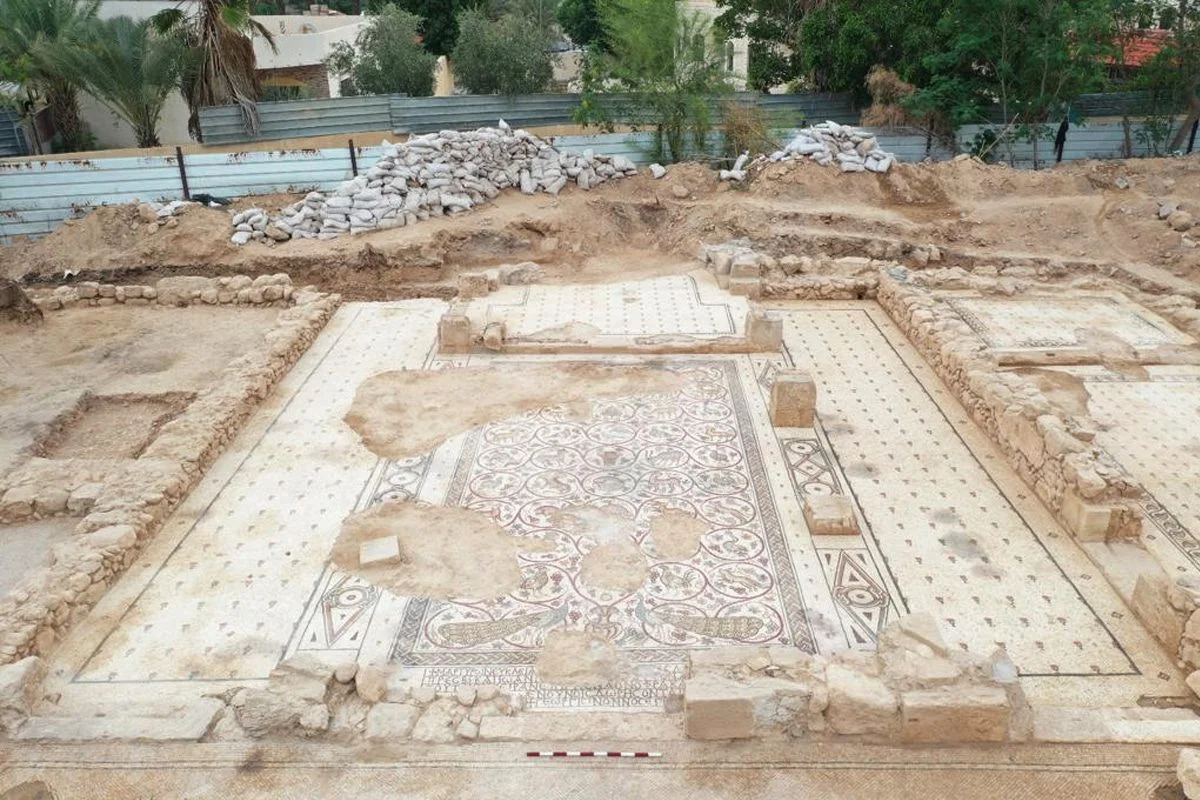Archaeologists from the Archaeology Unit of the Coordination of Government Activities in the Territories, COGAT, have uncovered several large mosaics near Jericho in the West Bank.
The mosaics are part of a large building complex, measuring around 250 square meters (2,700 square feet), that was first built sometime in the 6th century AD during the Byzantine period.
Archaeologists suggest that the structure was a likely a church or basilica, indicated by the discovery of depictions of birds, animals and vine braids in the mosaic floor, and the high-status materials of marble and bitumen stones used in the construction.
The nave is mostly preserved and has an adjacent prayer area where a three-metre-long inscription was found in Greek, commemorating “Georgios” and “Nonus” who donated to the church.

In AD 635, the Levant was invaded by an Arab army under the command of ʿUmar ibn al-Khaṭṭāb, and became the province of Bilad al-Sham of the Rashidun Caliphate. Following the collapse of Byzantine rule, the church continued to be used throughout the Early Muslim Period.
This is surprising, as Islam prohibited the display of imagery showing individuals as religious icons. Due to this doctrine, it was common for Muslim rulers to practice iconoclasm and deface or destroy religious imagery and structures.
The church also appears to have survived the great 749 Galilee earthquake which largely destroyed the cities of Tiberias, Beit She’an, Pella, Gadara, and Hippos, however, several years later the church was abandoned, and the entrance mysteriously blocked off.
Following the discovery, the Civil Administration plans to replicate the mosaic in order to display it at the “Good Samaritans” museum site.
Header Image Credit : COGAT





